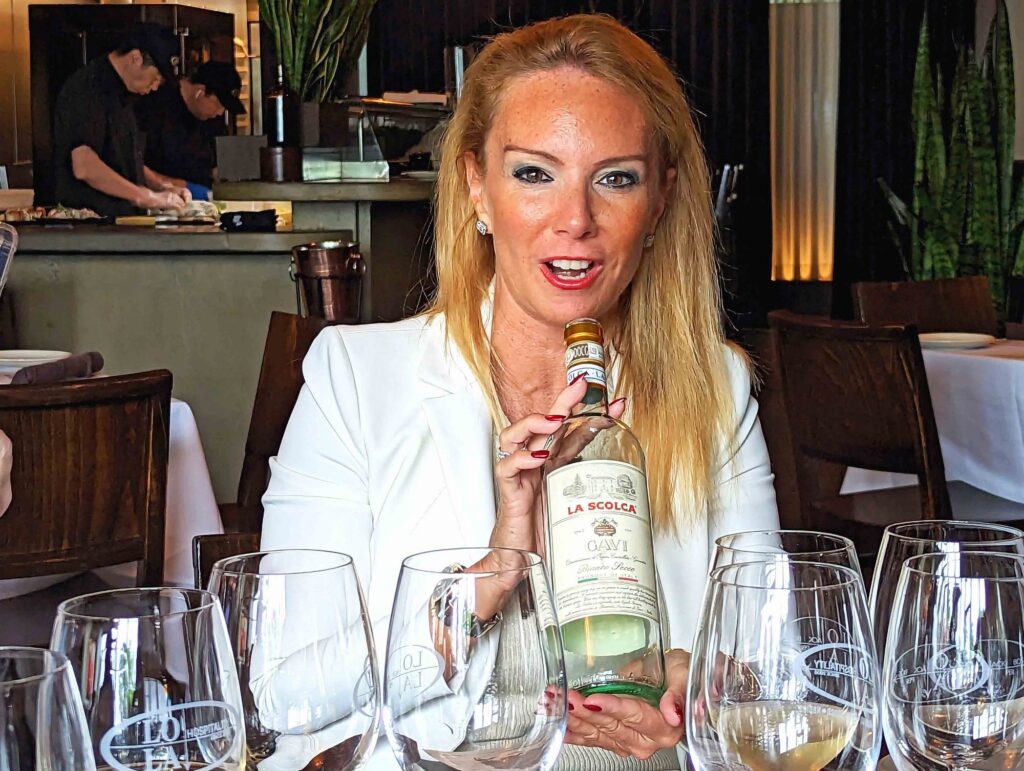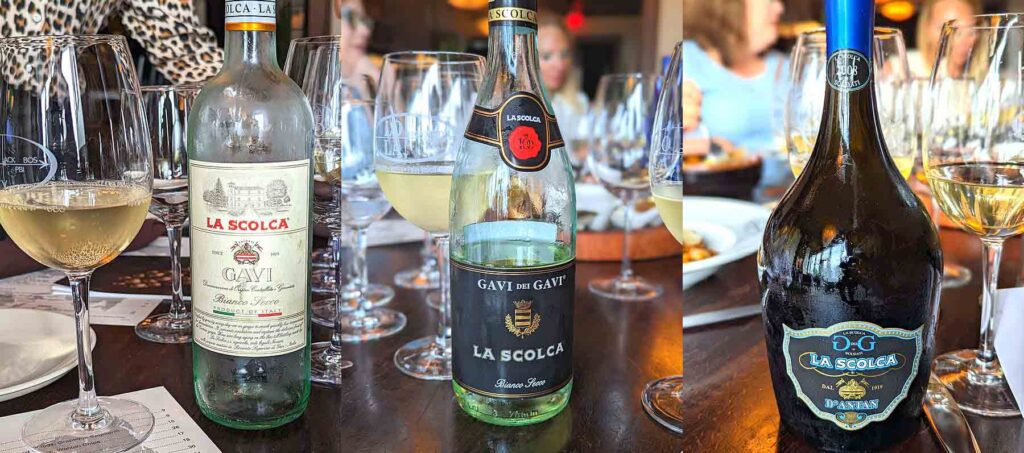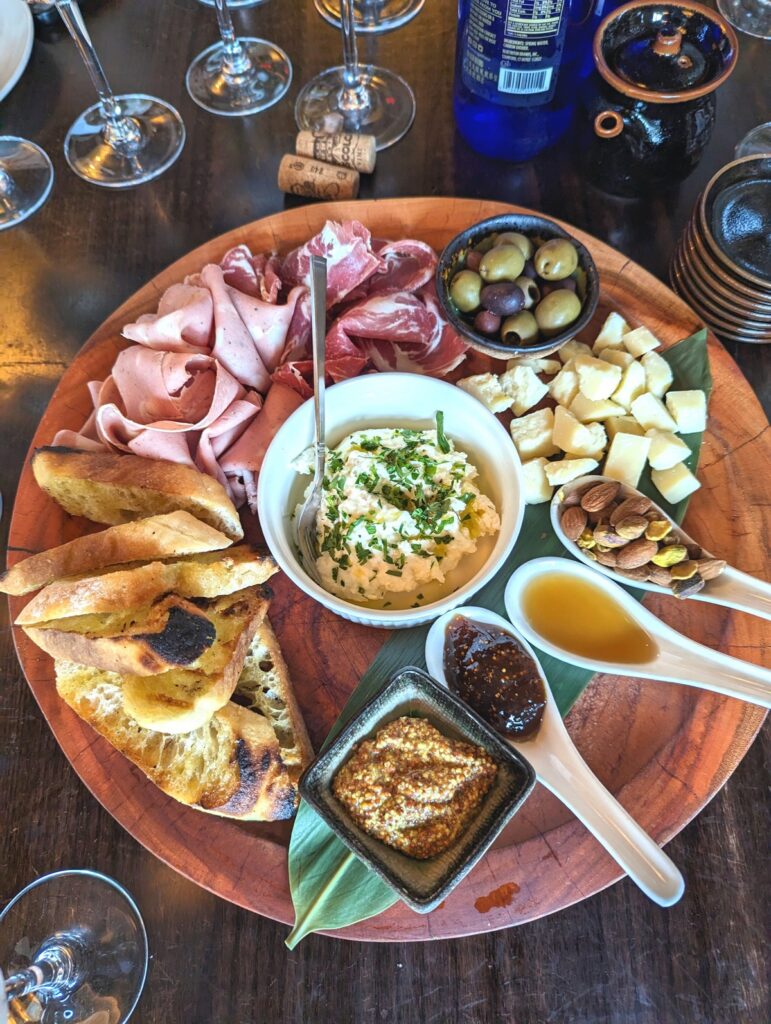
Talk about terroir! Chiara Soldati (above) sums up her family’s attitude about the Cortese grape and the village of Gavi. ‶I believe in the native grapes,″ she said at a luncheon at Lola 42 (lola42.com) in the Boston Seaport. ‶In Italy, we are caretakers of so many local flavors. By drinking wine, you understand more about the country.″
Since establishing La Scolca (lascolca.net/en) in 1919, the Soldati family has proven that the Cortese grape can make serious white wines. And they’ve done it in Italy’s Piemonte region, famous for its reds made from Nebbiolo, Barbera, and Dolcetto. This is the district of Barolo and Barbaresco — big reds that rival their counterparts in France’s Bordeaux and Burgundy regions.
Working with the Cortese grape, the Soldati family carved out a style of winemaking and a regional controlled district centered on Gavi. They had long been fans of crisp, dry French white wines and set out to make parallel Italian wines based on a native Piemonte grape. Over the years, they fought for recognition of Gavi as a controlled district (achieved in 1974) and finally for the prestige DOCG classification in 1998.
Ironically, their success encouraged extensive outside investment in the Gavi area. Because the regulations only specify grape and locale, some newcomers bypass the traditional crisp expression of Cortese in favor of heavier wines with strong wooden barrel notes. Honestly, we think these wines suffer from an identity crisis.
La Scolca is more purist. ‶We create wines without any makeup,″ says Soldati. It pays off in exciting, vibrant white wines. A wine-making acquaintance once lamented that ‶simple″ has become a dirty word in Italian wine — even as simplicity in Italian cuisine is praised as a virtue. La Scolca’s line of Cortese wines are simple in the best possible sense.

Tasting La Scolca’s wines with breezy summer cuisine
The company’s ‶white label,″ called La Scolca Gavi, is crafted from 20- to 30-year-old vines where green pruning reduces the grapes to six or seven clusters. Picked at the end of August, the green-colored must is cold-fermented at 16C° (60°F). The wine goes into bottles in January.

We tasted the 2022 La Scolca Gavi as an aperitif and with sushi, salmon tartare, and a classic Italian antipasti plate. It was ideal for a warm, muggy day by the harbor — the vinous equivalent of a white linen shirt. Tart and mineral, it displayed soft notes of white flowers on the nose, delicious flavors of peach and melon in the mouth, and a finish of lightly toasted almonds. Soldati herself noted that ‶almond is a characteristic flavor of Gavi.″
The ‶black label″ from La Scolca is trademarked in the U.S. and Europe as Gavi dei Gavi — a protection that the Soldatis sought before the formal DOC and DOCG system was established. Produced from vineyards with 60-year-old vines, each green-pruned to five clusters, it spends three months longer on the lees before bottling in March.
The resulting wine shows many of the same floral and fruit notes as the white label — only more so. The extended presence on the lees also gives it a creamy smoothness in contrast to the minerality of the white label. The almond notes are compounded by a faint yeastiness and salinity.
We tried the 2021 Gavi dei Gavi with two very different main courses — one a classic gnocchi Bolognese, the other Lola’s classic chopped salad of fresh vegetables, Italian ceci, tapenade, and hard-boiled egg. The black label acquitted itself nicely with both. It provided a firm foundation for the luscious Bolognese and a self-confident counterpoint to the crisp raw vegetables.
D’Antan shows the long life of premium Cortese
In lieu of dessert, we opted for generous pours of La Scolca D’Antan. Soldati and her father made the first vintage ‶when my father passed the family business to me.″ The premium wine of La Scolca, D’Antan is produced only in exceptional vintages and left on the lees (with occasional agitation) for up to a decade in stainless steel tanks before bottling. The freshness of the 2008 vintage attests to the potential longevity of Cortese-based wine. The opaque dark flaçon bottle signifies its prestige in the hierarchy of La Scolca wines.
The wine inside reflected its family origin as respect for the past and hope for the future. The Cortese minerality persists. The almond notes have become a subdued trumpet fanfare. Yet the wine displays none of the oxidation we usually associate with such salinity and toasted notes. Although it has never seen wood, the mouth feel is almost buttery while the flavors imparted by the lees give the wine the richness of a nice yellow birthday cake.
We asked Soldati if she saved D’Antan for special occasions. She reflected a moment. ‶Yes,″ she said, ‶but a special occasion can be every day.″
